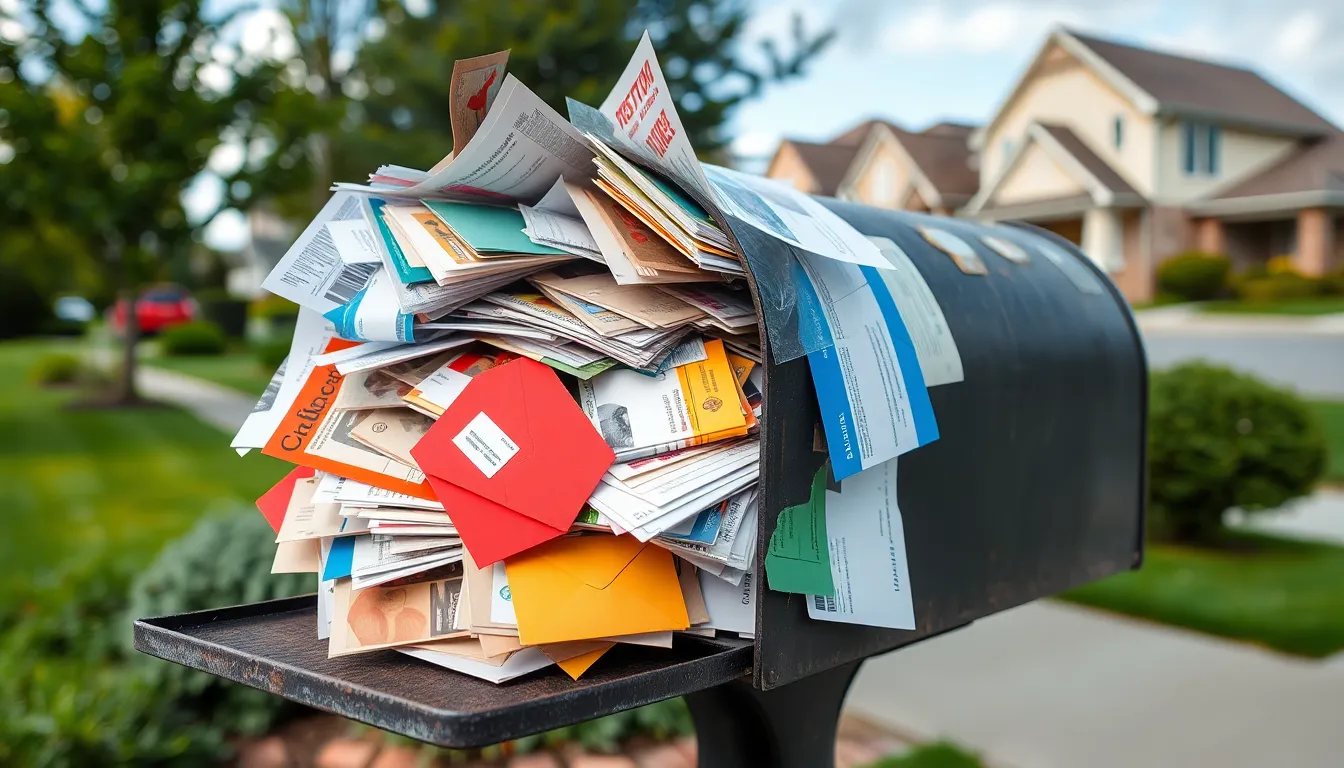In a world inundated with digital communication, the arrival of unwanted mail still manages to disrupt daily life. The New York Times recently highlighted the peculiar phenomenon of unsolicited letters that clutter mailboxes and overwhelm recipients. These pieces of mail often range from junk advertisements to misleading offers, leaving many wondering about their origin and purpose.
Unwanted mail can be more than just an annoyance; it can also pose risks like identity theft and privacy invasion. As people seek ways to declutter their lives, understanding the implications of these unsolicited communications becomes essential. This article delves into the complexities surrounding unwanted mail, exploring its impact on individuals and society while offering practical solutions to tackle this persistent issue.
Table of Contents
ToggleOverview of The Unwanted Piece of Mail
Unwanted mail significantly contributes to clutter in physical mailboxes. This type of mail includes junk advertisements, promotional material, and misleading offers. Such communications create annoyance for recipients, detracting from valuable time and resources. Statistics reveal that more than 60% of American households encounter unwanted mail regularly, amplifying concerns over identity theft and privacy invasion.
The implications of unwanted mail extend beyond mere inconvenience. Individuals often face challenges in discerning legitimate communications from deceptive ones, exposing them to scams. Educational initiatives raise awareness about the tactics used in these unsolicited letters, highlighting the importance of vigilance among recipients.
Addressing the issue of unwanted mail involves practical solutions. Opt-out services enable individuals to reduce the volume of promotional mail. Online resources provide guidance on how to manage unwanted mail, equipping recipients with tools to safeguard their personal information. An informed approach helps empower people to take control of their mailboxes, fostering security and privacy in the digital age.
The Origin of The Term

The term “unwanted mail” stems from growing concerns about unsolicited communications in both physical and digital forms. Understanding its historical context and current usage provides insight into the evolution of this issue.
Historical Context
The concept of unwanted mail dates back to the advent of mass postal services in the 19th century. Junk mail originated with the rise of advertising, where businesses sought to reach potential customers through unsolicited letters. In the mid-20th century, direct mail marketing became prevalent, leading to an exponential increase in unwanted correspondence. Legislative efforts, like the U.S. Postal Service’s Do Not Mail list, emerged in the 1990s in response to public demand for privacy and control over personal communications.
Current Usage
Currently, “unwanted mail” encompasses a variety of unsolicited messages, including spam emails and physical junk mail. In the digital era, more than 60% of American households receive unwanted mail regularly. These communications include promotional offers, phishing attempts, and misleading advertisements, creating confusion among recipients. Preferences for digital communication have intensified the volume of unsolicited messages, prompting calls for action and legislation to address privacy concerns and consumer protection.
Themes in The Unwanted Piece of Mail
The themes in “The Unwanted Piece of Mail” reveal significant implications for individuals and society. The persistent presence of unsolicited messages affects daily routines and mental well-being.
Impact on Daily Life
Unwanted mail disrupts daily routines and causes inconvenience for many individuals. Recipients frequently sort through junk mail, diverting their attention from important correspondence. The clutter that envelopes mailboxes leads to increased frustration, especially for those already managing busy schedules. Additionally, the frequent arrival of promotional material can stifle genuine communication, as it becomes challenging to identify meaningful messages among a sea of advertisements. Over time, this saturation of unsolicited content can lead to a reactive rather than proactive approach to mail management.
Psychological Effects
Unwanted mail also triggers various psychological effects in recipients. It cultivates feelings of anxiety stemming from potential scams and misrepresentation, as individuals grapple with distinguishing between legitimate communications and deceptive tactics. Over time, this ongoing exposure contributes to a general sense of distrust toward marketing and promotional materials. People may develop heightened paranoia about their privacy and security, fearing identity theft or personal information misuse. Ultimately, the emotional burden of unwanted mail extends beyond physical clutter, impacting mental health and overall well-being, reinforcing the need for effective solutions to manage it.
Public Reaction and Criticism
Public sentiment surrounding unwanted mail remains notably critical, with widespread acknowledgment of the frustrations it causes. Responses across various platforms reflect a desire for more stringent measures to combat this issue.
Media Coverage
Media outlets have extensively covered the implications of unwanted mail, spotlighting its pervasive existence and the associated risks. Notable reports reveal that high-profile cases of identity theft trace back to unsolicited mail, further fueling public concern. Articles emphasize the burden on consumers to sift through unwanted correspondence daily, raising questions regarding the efficiency of existing regulations like the Do Not Mail list. Industry experts frequently comment on the need for better legal frameworks that protect consumers from deceptive marketing practices. Overall, media narratives consistently underscore the urgent need for enhanced awareness and action against unwanted mail.
Social Media Response
Social media platforms serve as a vital space for discussions about unwanted mail. Users share personal experiences, illustrating the frustration of receiving countless advertisements and spam daily. Hashtags like #StopJunkMail trend, attracting communities advocating for collective action. Platforms such as Twitter and Facebook are inundated with anecdotes about deceptive offers, leading to calls for more robust consumer protection. Influencers in the privacy and security sectors highlight available strategies, urging their followers to utilize opt-out services effectively. This online discourse demonstrates significant engagement and solidarity among individuals facing unwanted correspondence.
Unwanted mail continues to be a pressing issue in today’s digital landscape. As individuals navigate the clutter of unsolicited communications, the need for awareness and proactive measures becomes increasingly clear. The emotional and psychological impacts of unwanted mail can disrupt daily life and erode trust, making it essential for consumers to take control of their mailboxes.
By utilizing available resources and advocating for stronger regulations, people can mitigate the effects of unwanted correspondence. The collective voice against unsolicited mail is growing, and with continued engagement, there’s hope for a future where mailboxes are free from clutter and consumers feel secure in their communications.





